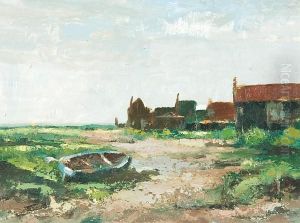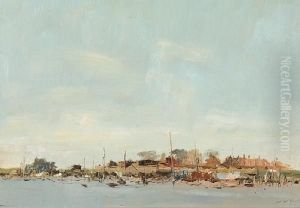William Henry Ford Paintings
William Henry Ford was an English painter known primarily for his genre scenes, often depicting life in the countryside. Born in 1828 in London, England, Ford grew up during a period of significant social and industrial change. While not as widely recognized as some of his contemporaries, Ford contributed to the rich tapestry of 19th-century British art with his detailed and heartfelt portrayals of everyday life.
Ford's artistic journey began at an early age, showing an aptitude for drawing and painting. He pursued his passion for art by studying at the Royal Academy Schools, a prestigious institution that provided him with a solid foundation in the techniques and styles prevalent during the Victorian era. Ford's style was influenced by the works of other genre painters such as William Powell Frith and Thomas Faed, whose works depicted similar themes of rural and domestic life.
Throughout his career, Ford exhibited his work at important venues, including the Royal Academy and the British Institution. His paintings often reflected a nostalgic view of rural England, capturing the simplicity and tranquility of country living. They were marked by a keen observation of detail and a warm, sympathetic approach to his subjects. Ford's works resonated with the Victorian public, who found comfort and reassurance in his idyllic scenes amidst the rapid urbanization and social changes of the time.
Ford's artistic output was relatively modest, and as a result, his work has not been as extensively documented or studied as that of some of his peers. Nevertheless, his contributions to the genre of narrative painting in the 19th century are recognized by art historians and collectors who appreciate the genre. William Henry Ford passed away in 1887, leaving behind a body of work that continues to be appreciated for its charming portrayal of Victorian life.


